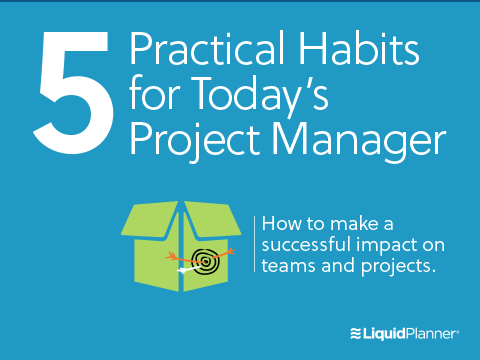Here’s something that doesn’t appear as a task or risk item on project plans: the decision-making process.
But think about it. Sometimes one of the biggest pain points is getting a decision from your boss or manager that moves the project forward. When you don’t get management approval, the time lag can derail a project from the beginning, especially when a decision is around budget approval, scope change, pricing decision, and other critical decisions.
It’s a frustrating situation. Especially when you’re the project lead who’s been entrusted with responsibilities and delivery guidelines. As you sit at your desk wondering when on earth you’ll hear something definitive about the issues you need to move forward on, it’s easy to think you’re being given the passive silent treatment. If this is an important project—what’s the holdup? What’s going on?
There are some valid reasons why management decisions aren’t made in good time, and I’m going to talk about them here. A few times during my IT career, I’ve had a chance to peek behind the management curtain to learn why decisions haven’t been made. They include:
- Fear of being wrong in risk-averse organizational cultures
- Political turf wars among management
- Fear of the CFO, or potential budget chaos behind the scenes
- Outdated (or nonexistent) technical skills in the management suite
- Retirement in Place (RIP) where the manager is biding time to retirement (more common in government settings)
If you’re in a frustrating position of waiting for a decision, here’s my advice:
Learn the typical blockers to management decisions in your organization, and then learn how other project managers have worked around blockers in the past.
Here are 6 tips and considerations that will help you get a decision from your manager:
1. Know your manager’s personality and working style
It’s easier to get a project decision from your manager when you know your manager’s personality and working style. For instance, I’ve had managers who were collaborative and wanted full consultation on the decision to be made. Then again I’ve had others who wanted to know what their options are for the decision.
Occasionally, I’ve come across some outlier managers who wanted project managers and teams to ply ahead on a project, make decisions as a team, and ask management for forgiveness later. Then again, there was the manager who wanted a formally documented business case before he made a decision.
It’s about knowing management style, not whether you consider it right or wrong and adapting how you ask for a decision.
2. Equip your manager to make the decision
Once you have a handle on your manager’s personality and working style, you have to arm them to make a decision. Some people call this part of managing up. To me, it’s a communications exercise where you as a project manager need to have a decision made to advance your project.
Here are some methods for communicating with your manager to get a decision:
- Provide your manager with 2-3 options about the decision, with explanations for each option.
- Detail the pros and cons of the decision as they affect the customer, the project and your manager.
- If a decision doesn’t go the way you want and has a business impact, then make sure the management decision-maker is aware of this, especially if it hurts their financial numbers.
3. Give the decision a deadline a deadline
Managers can be busy people (or at least pretend to be), which makes it even more important to attach a deadline with your decision request. I advise communicating the deadline as a potential block to progress:
I need a decision about X before my team can do Y.
Busy people usually respond to deadlines better. The other benefit here is that a deadline gives you a milestone on which to follow-up. Remember: A request for a decision without a deadline is easier to ignore for a busy person versus a decision with a deadline. Your boss will respect you for it, too.
4. Use the law of 3 for follow-up
One of the more interesting cultural issues I’ve seen as a contractor is the art of follow-up with management across organizational cultures. You can potentially prolong a decision if you follow up too soon or too often with a busy manager. My best advice is to know the culture of your organization when it comes to following up on a decision. If you haven’t worked with the manager much, you can even go ahead and ask about the best way to follow up on getting the answers you need.
It’s important to be respectful of the manager’s time. For instance, some managers don’t like to be hit up as soon as they get in the door in the morning. You also have to make your follow-ups actionable on part of the manager. In the Agile world, or on fast-moving projects, a slow or no decision can block project progress; so, referring to a “block” is language to stress during your followups. If you go in for a third follow-up with still no answer, then I would ask the manager if they require any additional information from you about your project to make the decision.
5. Centralize project management in the cloud
Things have changed since I learned Microsoft Project. My manager at the time complained that he never understood Project Gantt charts so he never used them in his decision making.
Cloud project management platforms with their customizable views over project scheduling and other information provide upper management with needed views into the status of their organization’s projects.
At its core, project management and decision making are data-driven. So when you centralize project management in the cloud, management gains a view of your schedule, progress, Agile stories, blockers, and all project communications. Centralizing your project management in the cloud is another tool for arming your manager to make the needed decisions.
6. Mind the manager/project team gap
When getting a project decision from your boss, it’s up to you to know how to get a decision for better or worse. This means paying attention and taking the time to learn about your team’s culture, your manager’s way of doing things and the right amount of follow-up needed among other decision-extracting skills. It’s not an easy art to master but the cost of not getting decisions is high as budgets and deadlines slip. When you can get those decisions in good time, your team can do the work it was hired for, and you can deliver what you promised for the customer.
Getting a decision from bosses and stakeholders is an important skill to master—and one of the many intriguing codes to crack that comes with the job. If you want to hone some basic PM habits, download our eBook, 5 Practical Habits for Today’s Project Manager.

 Schedule a demo of LiquidPlanner with a product expert today
Schedule a demo of LiquidPlanner with a product expert today







